- Terpenes are the molecules responsible for the smell of plants. Also found in cannabis, each of these non-psychoactive substances is associated with a specific scent.
- There are many different types of terpenes, which, differently combined, result in each cannabis strain having a unique aroma.
- One of the main terpenes in cannabis is myrcene. Keep scrolling to find out all about this molecule and its effects.
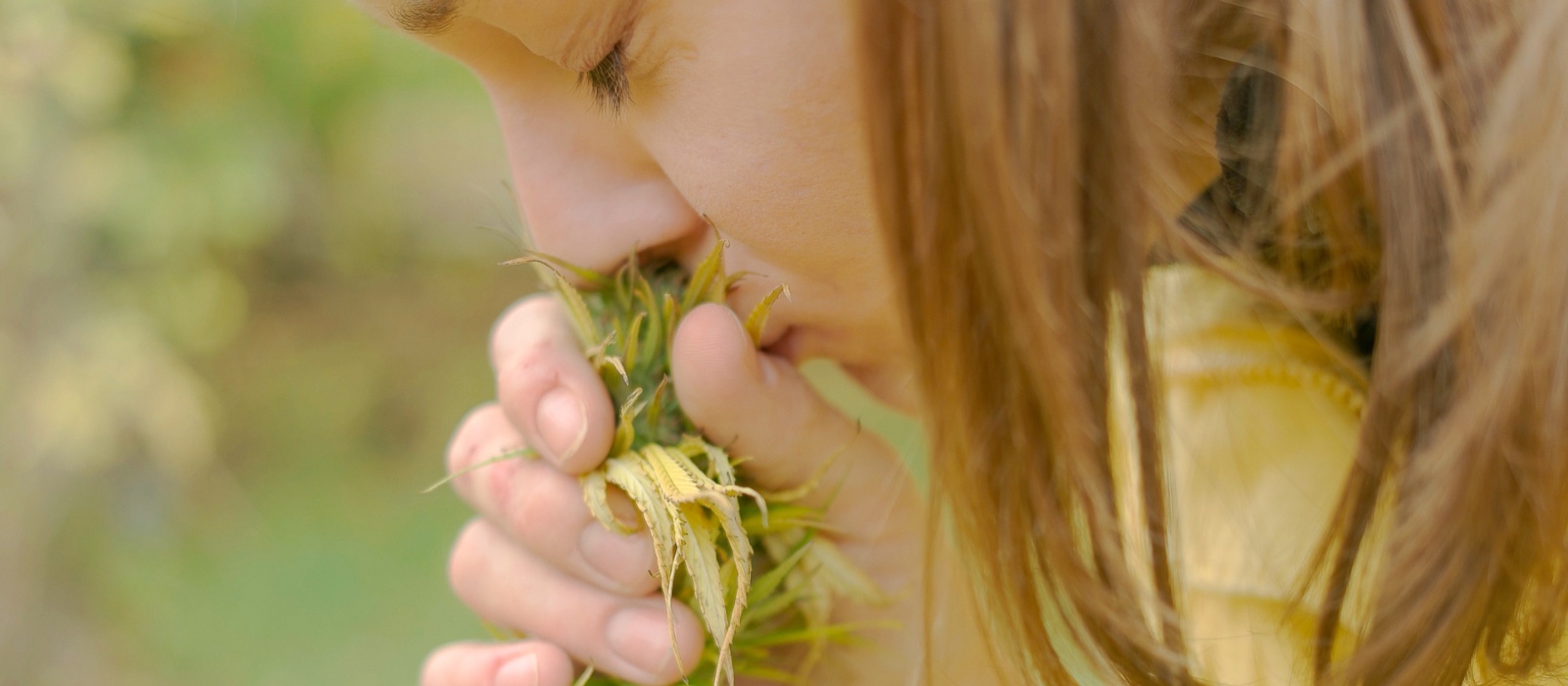
Myrcene, or beta-myrcene, is a monoterpene classified as a hydrocarbon. It is one of the main terpenes found in cannabis plants and also one of the most widely studied. As explained before, terpenes are organic compounds that do not induce the psychoactive high typically associated with cannabis – this is the job of THC – but that do modify its effect. This is why, depending on the concentration of this or that terpene, some strains are more suitable for relaxation and others for staying alert – a distinction often referred to as indica and sativa effect.
Secreted in the trichome glands of cannabis flowers, myrcene is a highly volatile substance that vaporises at 166 ºC. Present in varying amounts in cannabis strains, the terprene is also found in other plants including lemon verbena, hop, mango and thyme.
What does myrcene smell and taste like?
Myrcene is one of the ten main terpenes found in cannabis, where it is produced in high amounts. The flavour and the aroma are often described as earthy and musky, with subtle hints of spices and citrus reminiscent of clove.
What are the therapeutic benefits of myrcene?
According to research, myrcene has many therapeutic properties that can be highly beneficial to the body:
- Painkilling: A number of studies suggest that myrcene has a powerful analgesic effect. Apparently, the terpene promotes the release of endogenous opioids in the bloodstream through the a2 adrenoceptor, meaning that it encourages the body to produce substances that help ease pain.
- Anti-inflammatory: The anti-inflammatory effects of myrcene have been studied in a number of papers with promising results. The findings, based on experiments performed mostly on mice, suggest that myrcene is a powerful anti-inflammatory that inhibits prostaglandins.
- Immunoregulatory effect: Myrcene has been found to improve immune function by inhibiting the production of nitrogen oxide in immune cells (macrophages).
What conditions can be treated with myrcene?
Research has shown that myrcene is a highly safe organic compound that can prove effective in treating a number of conditions. Thanks to its painkilling, anti-inflammatory and immunoregulatory effect, it can be helpful in treating inflammatory, chronic and neuropathic pain, osteoarthritis and dermatitis, among other ailments.

Myrcene and the entourage effect
As explained in earlier articles, the entourage effect is the ability of cannabis compounds to interact with one another, producing stronger effects than when used separately. A good example of this is myrcene, which acts synergistically with cannabinoids such as THC and CBD, increasing the amount that passes through the blood-brain barrier. As a result, higher amounts of THC and CBD bind to the receptors in the endocannabinoid system. According to various studies, terpenes increase the affinity of THC for CB1 receptor, further increasing the analgesic effect of the cannabinoid.
In other words, besides having a painkilling effect per se, myrcene increases the analgesic properties of cannabinoids.
Myrcene and the effect of cannabis
Myrcene is found in highest amounts in strains classified as indica-dominant, and is believed to play a part in their "couchlock" effect. The terpene is in fact a powerful sedative that promotes muscle relaxation and helps induce sleep. This, however, should not be mistaken for the plant's psychoactive effect, which is induced by THC. In fact, research has shown that myrcene has no effect on brain function.
The myth of mango
There is a widespread believe among cannabists that eating mango 45 minutes prior to using cannabis increases the effect of THC, and as far-fetched as it may sound… that's exactly the case! This is because mango is rich in myrcene, which, as already mentioned, increases the amount of cannabinoids that passes through the blood-brain barrier.
Which strains are rich in myrcene?
As already mentioned, myrcene is contained in highest amounts in indica strains, this is why varieties in the Kush family are myrcene-rich. When present in combination with similar amounts of other terpenes with resembling properties such as caryophyllene – another sedative terpene – myrcene produces the effect known to us as "indica". While myrcene can also be found in sativa strains, these contain high amounts of invigorating terpenes such as limonene, which induce a more euphoric high.
Here are the Dinagirls you absolutely need to try if you you're interested in growing myrcene-rich strains:
Gorilla
Ultra-potent and with off-the-charts aroma, this hybrid has become one of the most highly acclaimed indicas in the U.S. Much of this success is down to its high myrcene content, which induces a strong sedative effect similar to a gorilla slap.
Blue Widow
As most strains in the Blue family, this hybrid is highly rich in myrcene, helping ease muscle and joint pain.
Purple Orange CBD
With a THC/CBD ratio of 1:2, this CBD-rich strain is highly balanced in terms of the effect. And because its high myrcene content improves the absorption of these cannabinoids, its therapeutic benefits are reinforced. These include stress relief, appetite stimulation and muscular relaxation.
Rao, V. S. N., A. M. S. Menezes, and G. S. B. Viana. "Effect of myrcene on nociception in mice." Journal of pharmacy and pharmacology 42.12 (1990): 877-878.
Paumgartten, F. J. "Neurobehavioral study of the effect of betamyrcene on rodents." Braz. J. Med. Biol (1991).
Andre CM+, Hausman JF, Guerriero G (2016). "Cannabis sativa: The Plant of the Thousand and One Molecules".Front Plant Sci. 7: 19
Lichtman AH, Cook SA, Martin BR. Investigation of brain sites mediating cannabinoid-induced antinociception in rats: evidence supporting periaqueductal gray involvement. Pharmacol Exp Ther. 1996 Feb; 276(2):585-93.
Morisset V, Urban L. Cannabinoid-induced presynaptic inhibition of glutamatergic EPSCs in substantia gelatinosa neurons of the rat spinal cord. J Neurophysiol. 2001 Jul; 86(1):40-8
Souza, M. C., et al. "Evaluation of anti-inflammatory activity of essential oils from two Asteraceae species." Die Pharmazie-An International Journal of Pharmaceutical Sciences 58.8 (2003): 582-586.
Gour N, Wills-Karp M (2015). "IL-4 and IL-13 signaling in allergic airway disease". Cytokine. 75 (1): 68-78.
Lim, Soon Sung, et al. "Effect of the essential oil from the flowers of Magnolia sieboldii on the lipopolysaccharide-induced production of nitric oxide and prostaglandin E2 by rat peritoneal macrophages." Planta medica 68.05 (2002): 459-462.
Tavares, Ana Cristina, et al. "Essential oils from Distichoselinum tenuifolium: chemical composition, cytotoxicity, antifungal and anti-inflammatory properties." Journal of ethnopharmacology 130.3 (2010): 593-598.



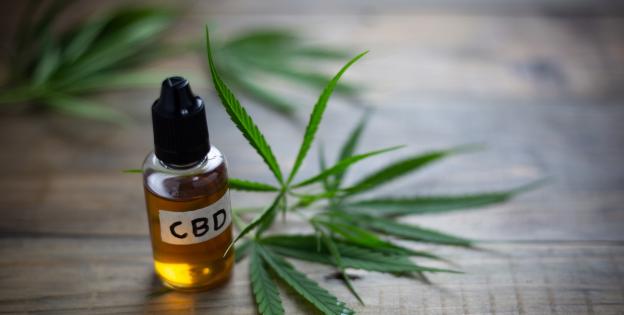
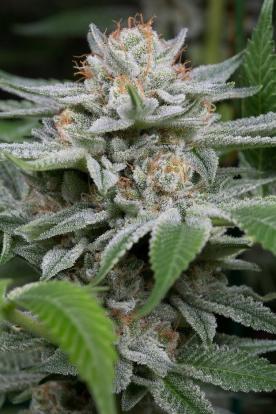
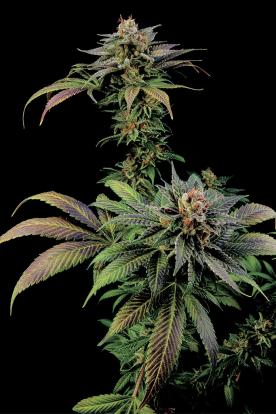
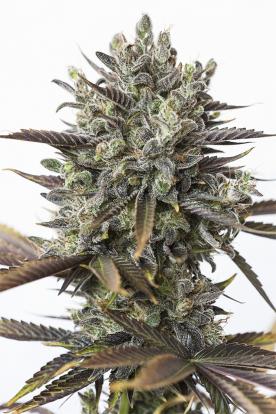
Comments from our readers
There are no comments yet. Would you like to be the first?
Leave a comment!Did you like this post?
Your opinion about our seeds is very important to us and can help other users a lot (your email address won't be made public).